Introduction
Understanding Level 1 Autism and its Implications
Autism Level 1, also known as high-functioning autism, affects a child's communication and social engagement abilities. This article explores the challenges faced by children with Level 1 Autism and the importance of providing appropriate support.
It highlights the need for a shift in approach and the formation of partnerships among different organizations. The article also addresses the role of Applied Behavior Analysis (ABA) therapy in supporting children with Level 1 Autism and explores alternative therapies.
It provides effective strategies for managing challenging behaviors and navigating support services. Additionally, the article emphasizes the significance of enhancing social skills development and empowering parents with tools and resources. Finally, it discusses the importance of building a supportive community and learning from shared experiences.
# 1. Understanding Level 1 Autism and its Implications
Autism Level 1, frequently referred to as high-functioning autism, distinguishes itself through its impact on a child's communicative and social engagement abilities. Children diagnosed with this level of autism often exhibit proficiency in conversational skills but may face challenges initiating interactions or discerning social subtleties. Behavioral inflexibility, another common characteristic, may hinder their adaptability to changes in routine or environment.
Thorough comprehension of these manifestations is imperative in guiding parents and professionals in delivering appropriate support and interventions. This understanding is especially crucial given the unique nature of every child with autism, which necessitates individualized programs based on comprehensive evaluations by a Board Certified Behavior Analyst (BCBA). However, the current systems have been criticized for not being fit for purpose, leading to a failure in providing the right autism support.
This inadequacy can result in detrimental long-term outcomes for autistic children, such as increased prevalence of mental health conditions and higher risk of school exclusion or non-attendance. Furthermore, a staggering statistic reveals that more than a quarter of parents have waited over three years to receive support for their autistic child, with only one in ten children receiving an appointment within the recommended 13-week waiting period. These challenges highlight the urgency for a shift in approach, moving from a 'diagnosis-led' system to a 'needs-led' one.
This approach promotes early identification and quicker effective support without relying solely on a diagnosis. It also necessitates the formation of formal local partnerships among schools, health services, voluntary services, and universities, fostering a collaborative environment for the benefit of the child. Moreover, the importance of open communication between all parties involved cannot be overstated.
This promotes a shared understanding of the goals and the steps necessary to achieve them. Encouragement can also be drawn from the experiences of families who have seen positive changes, providing hope and joy amidst the challenges. In light of the current autism assessment crisis, efforts are underway to improve the Special Educational Needs and Disabilities (SEND) system in England.
An investment of £850 million is being made into local authorities to enhance services and create new spaces in mainstream and special schools, making them more accessible and suitable for all children. Autism's prevalence in children is 2.78%, with neurodivergent traits, including autism, OCD, ADHD, dyslexia, among others, found in as many as 15-20% of the general population. However, it's worth noting that the characteristics of autism may not be the same across genders.
Boys are approximately four times more likely to be diagnosed with autism than girls of the same age, potentially due to different presentations of autism characteristics in girls. Understanding these nuances and the broader implications of autism is essential in providing patient care. As such, it is crucial for systems and services to adapt and work together in providing the necessary support for autistic children and their families.

# 2. The Role of ABA Therapy in Supporting Children with Level 1 Autism
Applied Behavior Analysis (ABA) therapy is a crucial tool in the arsenal of strategies to aid children diagnosed with Level 1 Autism. It's a method underpinned by rigorous scientific validation, honing in on enhancing specific behaviors, encompassing social skills, communication, and academic abilities. Moreover, ABA therapy extends its focus to adaptive learning skills, such as refining motor dexterity, promoting hygiene, grooming, fostering domestic capabilities, punctuality, and job competence.
This therapeutic approach is tailored to the unique needs of each child. A Board Certified Behavior Analyst (BCBA) initiates the process with a comprehensive individual assessment. Based on the findings, specific, measurable goals are set, and progress is consistently monitored, with strategies adjusted as necessary to ensure maximum benefit for the child.
Despite the potential benefits, it's important to acknowledge the diversity of experiences with ABA therapy. Some practitioners and parents attest to its effectiveness, while some recipients may not support its use. As noted by experts, the scientific quality of studies reporting long-term functional gains in children is only middling.
It's plausible that ABA is beneficial in some instances and potentially harmful in others. This dichotomy of experiences is evident in a case where children, predominantly aged between 10 and 14, were subjected to ABA therapy in small, padded, windowless rooms, under the surveillance of cameras. With the therapy imported from the US, these children were restrained by staff during instances of 'uncontrolled behaviours'.
This scenario illustrates the potential for negative impacts and stresses the necessity for rigorous policy evaluation and a commitment to the scientific process in ascertaining the effectiveness and suitability of ABA therapy. In the quest for effective therapies, it's essential to recognize the broad spectrum of options available. Therapies can enhance communication skills, improve social interactions, address sensory issues, and foster independence.
The Autism Community in Action (TACA) provides a wealth of information on medical research, treatment options, therapies, and nutrition for the autism community. However, the landscape of early interventions, as well as research supporting these interventions, is fractured. The lack of consensus among researchers studying available interventions contributes to this fractured landscape.
This situation underscores the need for clinicians to be clearer with families about the evidence supporting interventions and the potential for negative impacts. Despite the challenges, there are alternatives to ABA therapy that may be more aligned with a family's specific goals. As the Autistic Self-Advocacy Network (ASAN) suggests, therapy assessments should be conducted on a practitioner-to-practitioner basis.
Occupational therapy or speech-language therapy can be utilized to teach either oral speech or the use of communication devices. In conclusion, while ABA therapy can offer significant support to children with Level 1 Autism, it's essential to consider the diversity of experiences and the potential for both positive and negative impacts. It's crucial to explore the variety of therapy options available, focusing on those that align with the unique needs and goals of each child and their family.
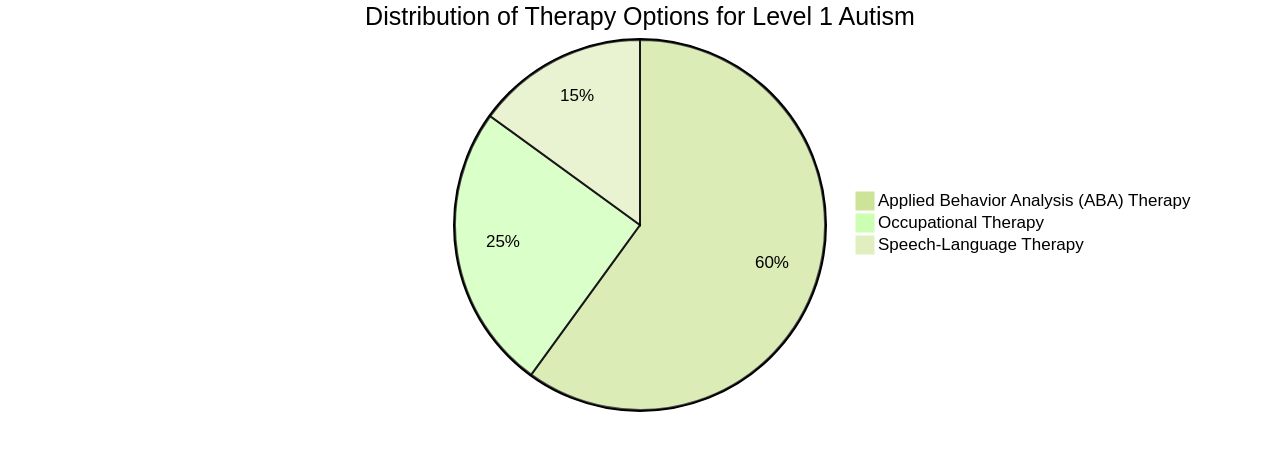
# 3. Effective Strategies for Managing Challenging Behaviors in Level 1 Autism
Addressing the unique needs of children with Level 1 Autism requires a personalized and comprehensive approach. This involves the combined efforts of various stakeholders, including social workers, psychologists, attorneys, and parents, as highlighted by Judge Sunny Bailey's 2018 program for at-risk youth. As Bailey emphasized, dealing with autism is a round-the-clock endeavor, necessitating the collaboration of all involved parties.
In this regard, one of the strategies that can be employed involves the use of visual aids to facilitate understanding and communication. In addition, crafting a predictable environment can help alleviate anxiety, while imparting self-regulation skills can equip these children with the tools to manage their responses. Moreover, positive reinforcement can motivate the cultivation of desired behaviors.
However, it's crucial to underscore that children with autism are not a monolith. Each child possesses unique strengths and abilities that should be recognized and harnessed. This is the premise behind the strengths-based approach, first theorized by social worker Bertha Reynolds.
This approach accentuates the positive attributes often associated with autism, such as excellent memory, keen attention to detail, and developed visual thinking. In the same vein, therapy can also be instrumental in uncovering and nurturing other abilities common to autism. These include a robust sense of justice and fairness, an increased capacity for experiencing emotions like joy and wonder, and a heightened attention to detail and patterns.
The ability to adhere to what's right, even in the face of social pressure, is another notable trait. However, it's also important to address the issue of 'masking' or 'social camouflaging', where autistic individuals adopt certain behaviors to blend in with non-autistic people. This is often a reaction to societal stigma and can start at a young age.
Understanding and addressing this issue is vital to ensuring the emotional well-being of children with autism. Lastly, it's necessary to acknowledge the limitations in the availability and scope of current programs for children with autism. Most are designed for preschool-aged children and are not widely known or accessible.
There is also a dearth of empirical studies comparing these intervention programs. Therefore, more research and development in this area are needed, particularly for programs catering to infants and toddlers. In conclusion, managing the needs of children with Level 1 Autism is a complex task that requires a customized, strengths-based approach, a supportive and predictable environment, and the concerted effort of all stakeholders.
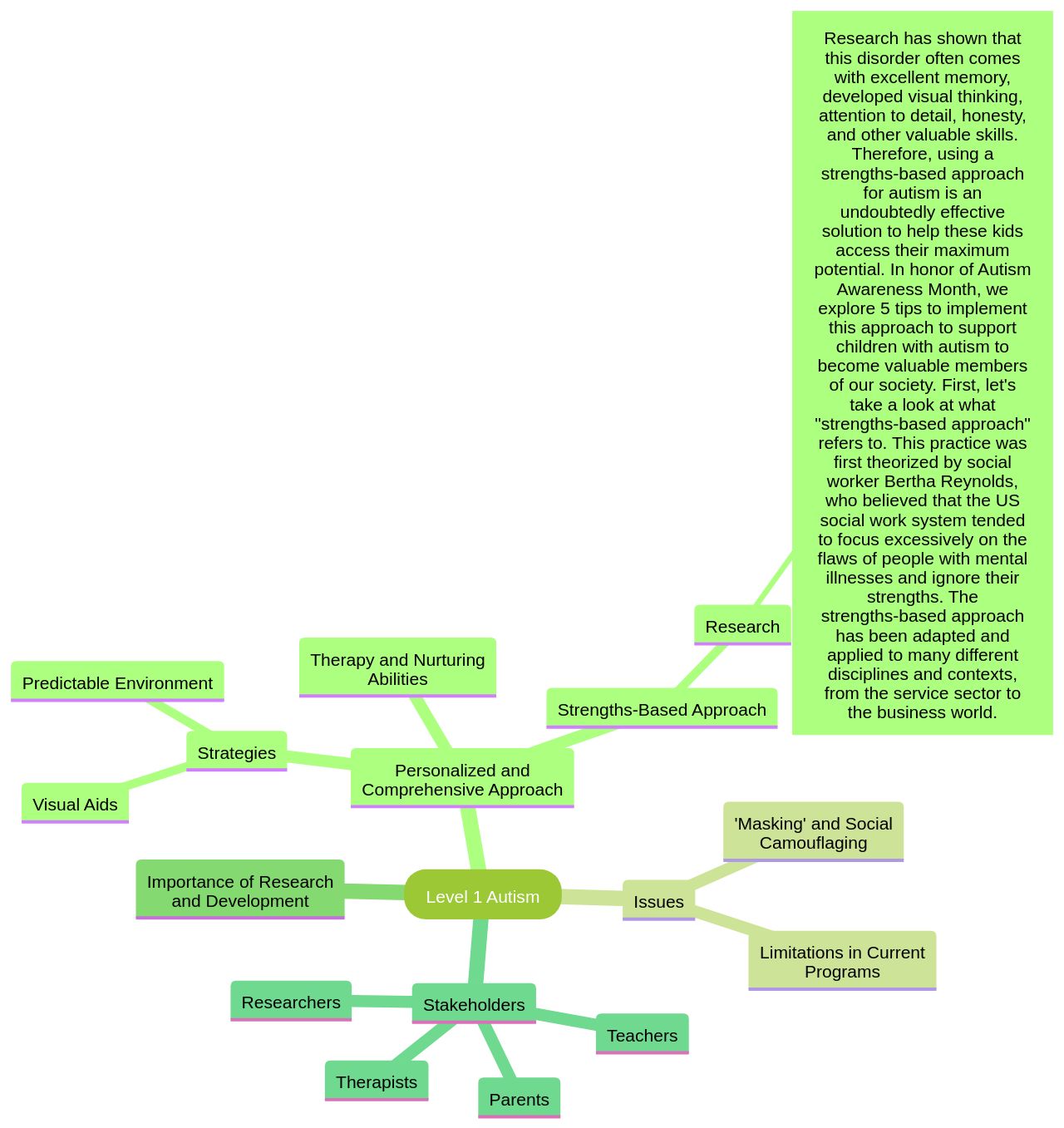
# 4. Navigating Support Services for Children with Level 1 Autism
The journey to secure supportive services for children with Level 1 Autism can often be an intricate labyrinth to navigate. The process involves parents and professionals probing diverse educational landscapes to unearth the environment that will best serve the child's unique needs.
These environments span from mainstream schools bolstered by additional support mechanisms, specialized education programs, to homeschooling alternatives. A case in point is a parent who has successfully homeschooled her children with special needs.
In her experience, her dyslexic nine-year-old was able to read at a 1st to 2nd-grade level while completing 7th-grade level science and history at home, a feat that would be challenging to replicate in a conventional school setting. It's worth noting that special training or education isn't required to homeschool children, even those with special needs in certain states.
Access to therapists and external resources are also available to augment the homeschooling experience. For instance, her youngest child saw an educational therapist for a year to help establish the foundation for reading.
This hands-on approach extends to occupational therapy and social skills therapies, underscoring the flexibility and adaptability of homeschooling options. Sourcing the right services and interventions also entails collaborating with the child's healthcare team.
This can be a complex process, especially when dealing with related conditions such as sleep disturbances and ARFID that often accompany Autism spectrum disorder, a neurodevelopmental disorder that impacts social communication and behavior. The challenge intensifies when social determinants of health like lack of transportation, housing instability, low income, and lack of health insurance come into play.
These factors can greatly hinder access to care, as evidenced in a case involving a five-year-old male with ASD and ARFID. Such cases underscore the pivotal role healthcare providers play in guiding patients and families through a complicated and often biased healthcare system.
However, the current healthcare system faces immense pressure. Recent reports indicate that since Covid-19, there has been a staggering 306% increase in the number of children waiting for an autism assessment.
The data reveals that only one in 10 children receive an appointment within 13 weeks of referral, while over a quarter of parents have waited more than three years for support for their child. In September 2023, there was a 27% rise in new autism referrals over the last year. It's an absolute nightmare, as one parent seeking an assessment for her child put it, with health and education systems being unable to effectively communicate and transfer information. Despite these challenges, children with autism and conditions such as ADHD can excel in mainstream education if their needs are met promptly. Early identification and support can also alleviate the negative and costly effects on autistic children’s physical health. Therefore, it is imperative that we shift towards a support system that responds to the needs of autistic children before they are diagnosed. In addition to educational settings, various therapies such as speech and language therapy, occupational therapy, and social skills groups can provide immense benefits. However, it's critical to highlight that most of the programs for children with autism are designed for preschool-aged children, and not all are widely known or available. Moreover, although outcome data are published for some of these programs, empirical studies comparing intervention programs are still lacking. To sum up, the process of navigating supportive services for children with Level 1 Autism is indeed complex, but with the right resources and support, it can be successfully managed to ensure the child's well-being and development.
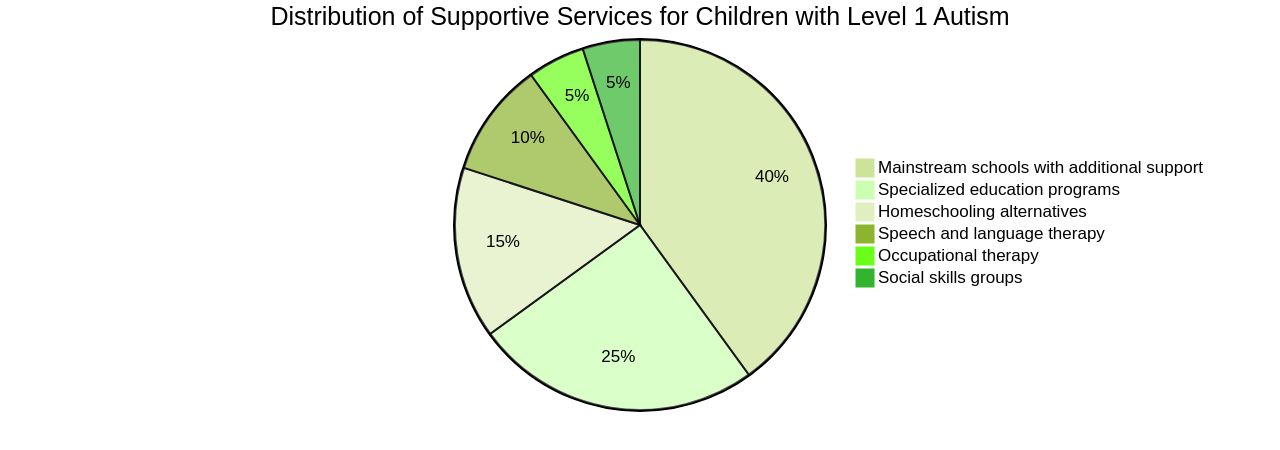
# 5. Enhancing Social Skills Development in Children with Level 1 Autism
The development of social skills is a critical aspect of intervention for children with Level 1 Autism. Techniques such as role-playing, storytelling, and group activities can offer considerable benefits, providing avenues for these children to refine their social interactions.
It's equally essential to teach children how to comprehend and articulate their emotions, which can significantly improve their social abilities. Consistent exposure to social interaction is paramount, as regular practice can yield notable improvements over time.
Notably, research from the University of Geneva (UNIGE) has shed light on the unique attentional preferences of children with autism. It was found that while typically developing children increasingly focus their attention on social elements such as faces and social interactions as they grow, children with autism tend to be more interested in non-social stimuli like textures or geometric shapes.
This difference in attentional focus underscores the need for early interventions to enhance social attention, which could help align autistic children's developmental courses more closely with their peers. Studies like the one conducted by the University of California underscore the importance of parent involvement in these programs.
Parents' participation allows them to apply the intervention strategies outside of sessions, thereby reinforcing the learning process. Furthermore, teaching parents skills to assist their children is believed to alleviate parenting stress by promoting empowerment, knowledge, and social support.
The study also highlighted that parents felt more positive and supported, and gained a greater understanding of their child's development after participating in the program. These findings align with the strengths-based approach for autism, which emphasizes the unique skills and abilities of children with autism rather than focusing on their flaws.
This approach, first theorized by social worker Bertha Reynolds, has been successfully applied in various disciplines and contexts, including in the support of children with autism. It's essential to remember that there are several programs designed for children with autism, each with its unique philosophy and approach. However, the availability of these programs is not widespread, and empirical studies comparing intervention programs are limited. Therefore, it's crucial to continually evaluate and improve these programs to ensure their effectiveness. In conclusion, the development of social skills in children with Level 1 Autism is not a one-size-fits-all process. It requires an individualized approach, taking into account each child's unique attentional preferences and strengths. With the right support and interventions, these children can improve their social skills and confidence, paving the way for a more fulfilling social life.
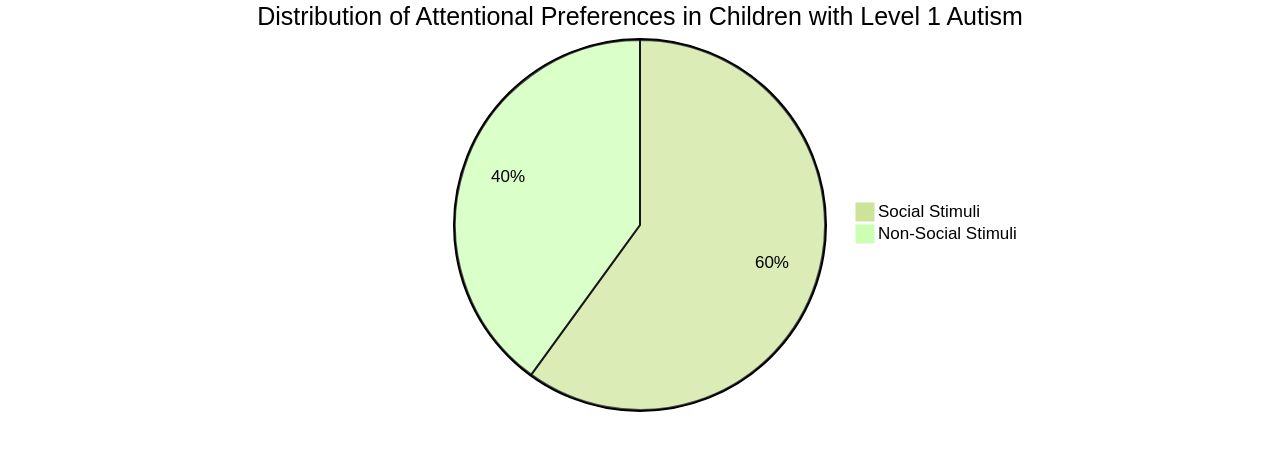
# 6. Empowering Parents: Tools and Resources for Supporting Children with Level 1 Autism
Empowering parents with the right tools and resources is pivotal in providing the best support for children with Level 1 Autism. This includes a wide range of resources, from educational materials that provide a deeper understanding of the condition, to methods for managing challenging behaviors and advice on how to navigate support services. Take Dan Harris for example, a father and advocate for autism acceptance.
Inspired by his son Joshie's use of an electronic tablet for communication, Harris promoted the use of technology as a communication aid for non-verbal individuals. His advocacy led to the installation of 100 picture boards in Peterborough, showcasing the transformative potential of innovative tools for communication and education. Creating spaces for parents to connect with others in similar situations is another key component.
This can be achieved through online forums, support groups, or workshops where experiences can be exchanged and lessons can be learned collectively. For instance, a parent made use of the Doorstep Library service to instill a love for reading in her children, a crucial skill for their educational journey. However, these efforts should not distract from the broader picture.
The complexities of the educational system can be overwhelming, especially for children with autism. Organizations like The Autism Community in Action (TACA) play a significant role in this respect. They offer a wealth of information about medical research, treatment options, therapies, and nutrition to the autism community, along with guidance on important topics such as Individual Education Plans (IEPs) and alternatives to traditional public schooling.
It's important to remember that each child with autism is unique, as the saying goes, 'If you see one child with autism, you see one child with autism.' This truth highlights the uniqueness of each day with autism, cultivating hope that each new day brings fresh opportunities. Lastly, it’s crucial to recognize the existing gap in knowledge about the variety of programs available for children with autism, particularly those of preschool age.
While research comparing these various intervention programs is limited, professionals agree on the importance of treatment intensity, family involvement, and a focus on generalization. Coupled with the individual needs of each child, these factors lay the groundwork for successful interventions and a promising future for children with autism. In light of this, consider the benefits of online resources such as www.asd.media.
For a subscription fee, parents can gain unlimited digital access to a wealth of information and support. With plans ranging from $5-7 per month to a yearly subscription of $130, it offers an accessible and flexible option to stay connected and informed. The site, crafted using Webflow and jQuery, demonstrates how digital platforms can be a valuable tool in the quest for knowledge and support in the autism community.
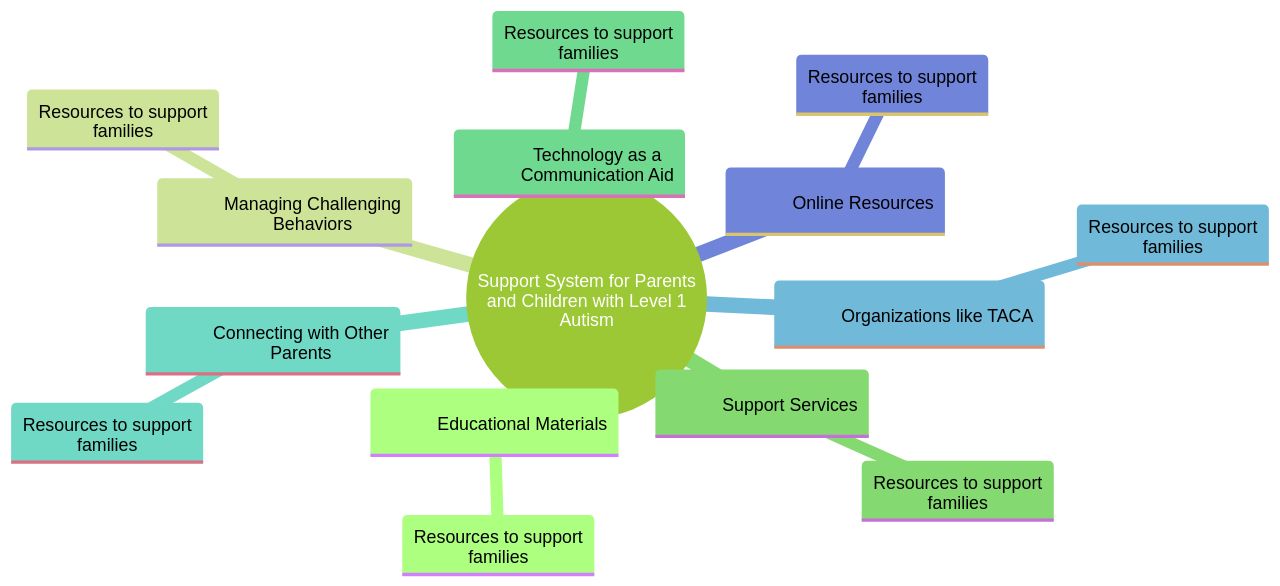
# 7. Building a Supportive Community: Sharing Experiences and Learning from Each Other
Creating a supportive and nurturing community is of utmost importance, not only for parents but also for professionals who work with children diagnosed with Level 1 Autism. By combining our shared experiences and learning from one another, we can gain essential insights and develop practical strategies to navigate the challenges of raising and educating these children. ASD Media is a beacon in this journey, providing a wealth of resources, up-to-date news, and a platform to connect with a community of parents and professionals alike.
This invaluable platform offers unlimited digital access through various subscription plans, including a yearly plan for $130 and a monthly plan ranging from $5-7. The primary goal of this tool is not just sharing information; it's about nurturing a collaborative and growth-oriented community, driving continuous improvement, and ultimately, ensuring positive outcomes for children with Level 1 Autism. The significance of such a community is emphasized by the experiences of ten autistic mothers with children in mainstream education.
Their stories underscore the challenges of securing the right support for their children, often pointing to the system itself as the main hurdle. The difficulties extend beyond navigating the system; these mothers also reported feelings of judgement and stigmatization due to their own autism, and managing sensory and communication difficulties, issues that non-autistic parents do not typically encounter. These experiences highlight the need for a paradigm shift in our support approach for autistic families.
It's not just about enhancing services, but about reshaping training programs to highlight the positive aspects of autism, not just the negatives. This training should be developed and led by autistic adults, offering a unique and invaluable perspective. In the UK, proactive parents are collaborating with local councils to create supported-living homes for their high-needs autistic children.
This initiative, led by the Simon Trust and Surrey county council, is a shining example of what can be achieved when parents, professionals, and local authorities unite towards a shared objective. Children diagnosed with autism this year will graduate from high school in 2030. They are not only our present but also our future.
It is crucial that we act now to ensure that they, and the generations that follow, are not left behind. The experiences of these ten mothers underscore the importance of fostering a supportive community for parents and professionals. By doing so, we can ensure that every child with autism gets the opportunity to thrive and realize their full potential.
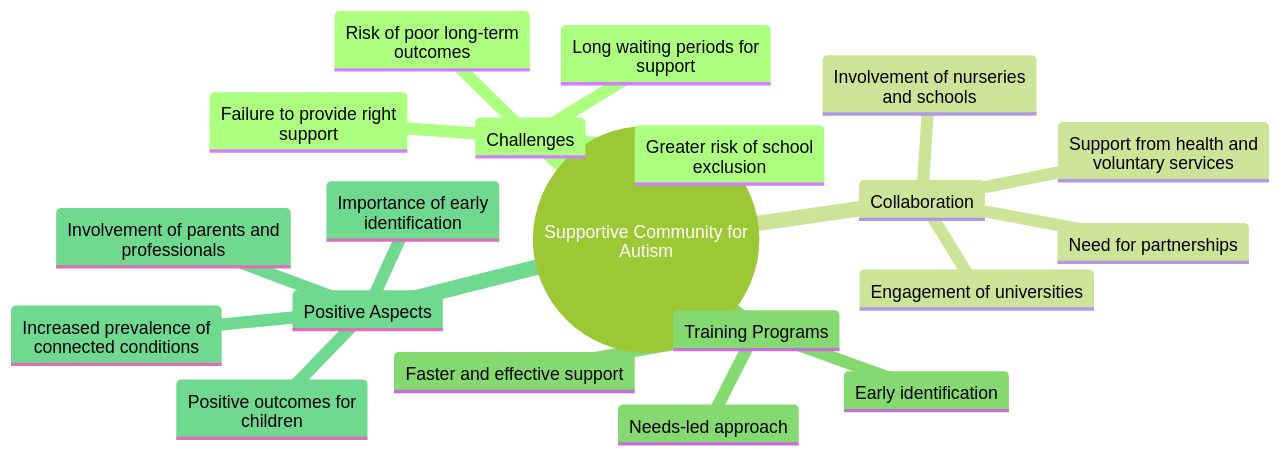
Conclusion
In conclusion, understanding and supporting children with Level 1 Autism requires a shift in approach towards a needs-led system. This involves forming partnerships among organizations, promoting early identification, and providing quicker support. Alternative therapies should be considered alongside Applied Behavior Analysis (ABA) therapy to meet each child's unique needs.
Personalized strategies for managing challenging behaviors and recognizing strengths are essential. Enhancing social skills development through techniques like role-playing and involving parents in intervention programs can have positive impacts. Empowering parents with tools, resources, and spaces to connect with others is crucial.
Building a supportive community where experiences are shared and learning from one another is emphasized is vital for parents and professionals. By implementing these approaches, we can ensure positive outcomes for children with Level 1 Autism. Let's work together to ensure every child has the opportunity to thrive and reach their full potential.




